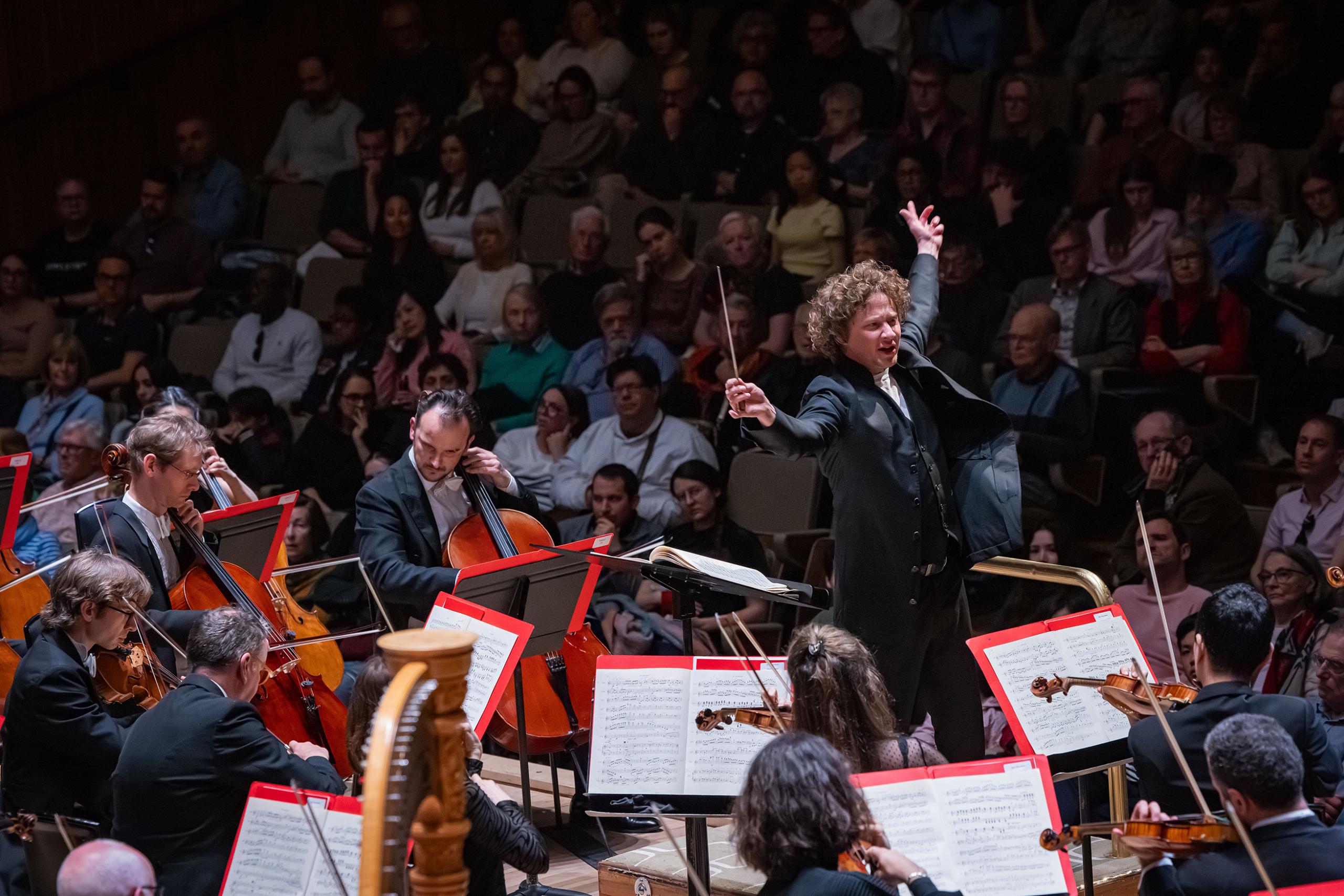Orchestral concerts: a 60 second beginner’s guide

Let’s start at the very beginning.
Unlike a gig, there’s no support act (or ads, or trailers) – the concert starts at the time advertised, with doors usually opening about 30 minutes before.
Before the Music
Join the conversation
Drinks, bites & programmes
At the Royal Festival Hall, you’ll spot our Philharmonia Social volunteers, staff and players before the concert, in the interval, and afterwards. Come and find them if you have any questions – whether you’d like a programme or just want to chat about your favourite symphony.
Look out for our wraparound events too – from free smaller-scale concerts to Philharmonia Debates…, and special introductions for first-timers. There are plenty of ways to get involved, both in and out of the concert hall.
Most venues have a bar and somewhere to grab food, and at the Royal Festival Hall you can take drinks in with you to enjoy during the music. On your way in, pick up a free programme – it’s full of interesting background about the artists and the concert.
The Orchestra assembles
Spotlight on the leader
Now, we’re almost ready for the show. First, the orchestra comes on stage; everyone except one player. This might be about five minutes before the music begins.
The last musician to arrive is the Leader, or Concert Master, who sits at the front of the violins. As second-in-command, they get their own entrance (and sometimes applause). Their first job is to signal the orchestra to tune – making sure everyone is ready.
Enter the Maestro
During the performance
Next, the conductor enters – cue more applause. After a bow, the hall falls silent. With no curtain to rise, that silence is the signal: the music is about to begin. Settle in, relax, and enjoy.
It’s worth knowing that you can leave the hall during the music if you really need to, but you’ll only be able to come back in when there’s a break between pieces.

The interval
Then comes the interval (usually about 20 minutes) – the perfect chance to grab a drink or chat with our Philharmonia team.
Applause: the unwritten rules
Clapping at a concert has its own little etiquette – and for good reason! Applause happens at key moments: when the conductor or soloist enters, at the end of a full piece, and of course at the end of the concert. Many pieces are divided into sections, or ‘movements’ (check your programme), and audiences usually wait until the end of the whole piece to clap – you want to hear every moment fall into place.
The finale & final bows
If there’s a soloist, the more enthusiastic the audience, the more likely it is that they’ll come back for ‘one more tune’.
At the end of the concert, the conductor often shakes hands with the concertmaster and a few players, before taking a bow. They may invite different sections of the Orchestra to stand for recognition or pick out players who had a ‘big moment’ in the symphony.
And if the applause keeps going? Expect the conductor to leave the stage and return a few times!


Capturing the moment
Taking the music home
Feel free to take photos during the applause – and if you share them, don’t forget to tag us @philharmonia.
We hope you’ll head home with your head full of music and memories. See you next time!
